Prediction and Early Warning of Extreme Winds for High-Speed Railway Bridge Construction Using Machine-Learning Methods
Abstract
:1. Introduction
2. Machine Learning-Based Wind Speed Early-Warning Framework
2.1. BP Neural Network
2.2. BP-GA
2.2.1. Individual Coding and Population Initialization
2.2.2. Adaptation Function
2.2.3. Selection Operations
2.2.4. Cross Operation
2.2.5. Variant Operations
3. Validation and Application
3.1. Wind Environment Monitoring System for the Bridge Site
3.2. Wind Characteristics Analysis
3.2.1. Mean Wind Speed and Direction
3.2.2. Turbulence Intensity
3.2.3. Gust Factor
3.2.4. Turbulence Integral Scale
3.2.5. Turbulent Power Spectral Density
3.3. Model Training and Prediction
3.3.1. Setting of Model-Related Parameters
3.3.2. Prediction Results
3.3.3. Performance Assessment Guidelines
3.4. Wind Speed Warning and Hierarchical Control
- (1)
- When the predicted maximum gust average wind speed is greater than 13 m/s for the next half hour, which is equivalent to a Class 6 wind speed, a Class III response is initiated and on-site lifting operations are halted.
- (2)
- When the predicted maximum gust average wind speed exceeds 20 m/s for the next half hour, which is equivalent to a Class 8 wind speed, a Class II response is activated and all on-site construction personnel are evacuated.
- (3)
- When the predicted maximum gust average wind speed for the next half hour surpasses the Level I response threshold, a Level I response is initiated and temporary reinforcement measures, such as wind cables on the bridge abutment, are taken to ensure the structure’s safety against wind loads. For the background engineering cases, the calculated bridge deck location Level I wind speed response threshold is 52 m/s. The grading and early-warning and control system is illustrated in Figure 14.
4. Conclusions
- (1)
- With the increase in the number of prediction steps, the prediction error became larger and larger. The error of the one-step prediction was the smallest, with the training set values of R2, MAE and RMSE being 0.967, 0.561 and 0.787, respectively. The test set values of R2, MAE and RMSE were 0.864, 0.489 and 0.734, respectively.
- (2)
- Using the hybrid BP-GA, a multi-step ahead prediction of gust wind speed during the construction period of a large-span bridge was conducted. The prediction results show that the prediction curve is close to the actual curve and meets the prediction accuracy requirements, with the one-step prediction having the best performance.
- (3)
- Based on the measured wind data of the bridge site area during the construction period, the gust wind speed prediction method based on BP-GA was used to predict the wind speed trend in the next half hour. Afterward, a graded early-warning and control system were implemented.
Author Contributions
Funding
Institutional Review Board Statement
Informed Consent Statement
Data Availability Statement
Acknowledgments
Conflicts of Interest
References
- Par Gomes, L.; Vickery, B. On the prediction of extreme wind speeds from the parent distribution. J. Wind. Eng. Ind. Aerodyn. 1977, 2, 21–36. [Google Scholar] [CrossRef]
- Deng, Y.; Ding, Y.-L.; Li, A.-Q.; Zhou, G.-D. Prediction of extreme wind velocity at the site of the Runyang Suspension Bridge. J. Zhejiang Univ. Sci. A 2011, 12, 605–615. [Google Scholar] [CrossRef]
- Wang, H.; Zhang, Y.-M.; Mao, J.-X.; Wan, H.-P. A probabilistic approach for short-term prediction of wind gust speed using ensemble learning. J. Wind. Eng. Ind. Aerodyn. 2020, 202, 104198. [Google Scholar] [CrossRef]
- Lee, S.-L.; Kim, S.-W. Estimation of basic wind speed at bridge construction site based on short-term measurements. KSCE J. Civ. Environ. Eng. Res. 2013, 33, 1271–1279. [Google Scholar]
- Cochran, L.; Derickson, R. A physical modeler’s view of computational wind engineering. J. Wind. Eng. Ind. Aerodyn. 2011, 99, 139–153. [Google Scholar] [CrossRef]
- Erdem, E.; Shi, J. ARMA based approaches for forecasting the tuple of wind speed and direction. Appl. Energy. 2011, 88, 1405–1414. [Google Scholar] [CrossRef]
- Wang, H.; Mao, J.-X.; Spencer, B.F., Jr. A monitoring-based approach for evaluating dynamic responses of riding vehicle on long-span bridge under strong winds. Eng. Struct. 2019, 189, 35–47. [Google Scholar] [CrossRef]
- Liu, H.; Liu, C.; He, S.; Chen, J. Short-term strong wind risk prediction for high-speed railway. IEEE Trans. Intell. Transp. Syst. 2021, 22, 4243–4255. [Google Scholar] [CrossRef]
- Shao, X.D. Bridge Engineering (Fourth Version); China Communications Press: Beijing, China, 2016. [Google Scholar]
- Boonyapinyo, V.; Lauhatanon, Y.; Lukkunaprasit, P. Nonlinear aerostatic stability analysis of suspension bridges. Eng. Struct. 2006, 28, 793–803. [Google Scholar] [CrossRef]
- Jin, C.; Jianjing, J. Influence of Wind on Stability of Bridges and Its Countermeasures. J. Nat. Disasters 2002, 11, 81–84. [Google Scholar]
- Hu, N.; Dai, G.-L.; Yan, B.; Liu, K. Recent development of design and construction of medium and long span high-speed railway bridges in China. Eng. Struct. 2014, 74, 233–241. [Google Scholar] [CrossRef]
- Chen, Z.; Yu, X.; Yang, G.; Spencer, B., Jr. Wind-induced self-excited loads on bridges. J. Struct. Eng. 2005, 131, 1783–1793. [Google Scholar] [CrossRef]
- JTG/T 3360-01-2018; Wind-Resistant Design Specification for Highway Bridges. China Communications Press: Beijing, China, 2018.
- Hoppmann, U.; Koenig, S.; Tielkes, T.; Matschke, G. A short-term strong wind prediction model for railway application: Design and verification. J. Wind. Eng. Ind. Aerodyn. 2002, 90, 1127–1134. [Google Scholar] [CrossRef]
- Wang, D.-M.; Wang, L.; Zhang, G.-M. Short-term wind speed forecast model for wind farms based on genetic BP neural network. J. Zhejiang Univ. Eng. Sci. 2012, 46, 837–841. [Google Scholar]
- Wu, Y.M. The Comparison of Different Chromosome Coding Method Based on Genetic Algorithm. Adv. Mat. Res. 2012, 546, 666–669. [Google Scholar] [CrossRef]
- Wu, J.; Zhang, B.; Wang, K. Application of adaboost-based bp neural network for short-term wind speed forecast. Power Syst. Technol. 2012, 36, 221–225. [Google Scholar]
- Kusiak, A.; Zheng, H.; Song, Z. Short-term prediction of wind farm power: A data mining approach. IEEE Trans. Energy Convers. 2009, 24, 125–136. [Google Scholar] [CrossRef]
- Li, L.J.; Huang, W. A short-term power load forecasting method based on BP neural network. Appl. Mech. Mater. 2014, 494, 1647–1650. [Google Scholar] [CrossRef]
- Jin, H.; Wu, S.; Peng, Y. Prediction of contact fatigue life of alloy cast steel rolls using back-propagation neural network. J. Mater. Eng. Perform. 2013, 22, 3631–3638. [Google Scholar] [CrossRef]
- Yu, L.; Hu-Quan, G. Wind Speed Prediction Based on AdaBoost and BP Neural Networks. J. Mod. Power Syst. Clean Energy. 2012, 2, 80–83. [Google Scholar]
- Zheng, X.; Jia, D.; Lv, Z.; Luo, C.; Zhao, J.; Ye, Z. Short-time wind speed prediction based on Legendre multi-wavelet neural network. Trans. Intell. Technol. 2023, 22, 46–52. [Google Scholar] [CrossRef]
- Karsoliya, S. Approximating number of hidden layer neurons in multiple hidden layer BPNN architecture. Int. J. Eng. Trends Technol. 2012, 3, 714–717. [Google Scholar]
- TB 10303-2020; Technical Specification for Construction Safety of Railway Bridge and Culvert. China Railway Publishing House: Beijing, China, 2020.
- JGJ 215-2010; Technical Specification for Safety of Installation, Use and Disassembly of Building Hoist in Construction. China Building Industry Press: Beijing, China, 2010.
- TB 10002-2017; Code for Design of Railway Bridges and Culverts. China Railway Publishing House: Beijing, China, 2017.
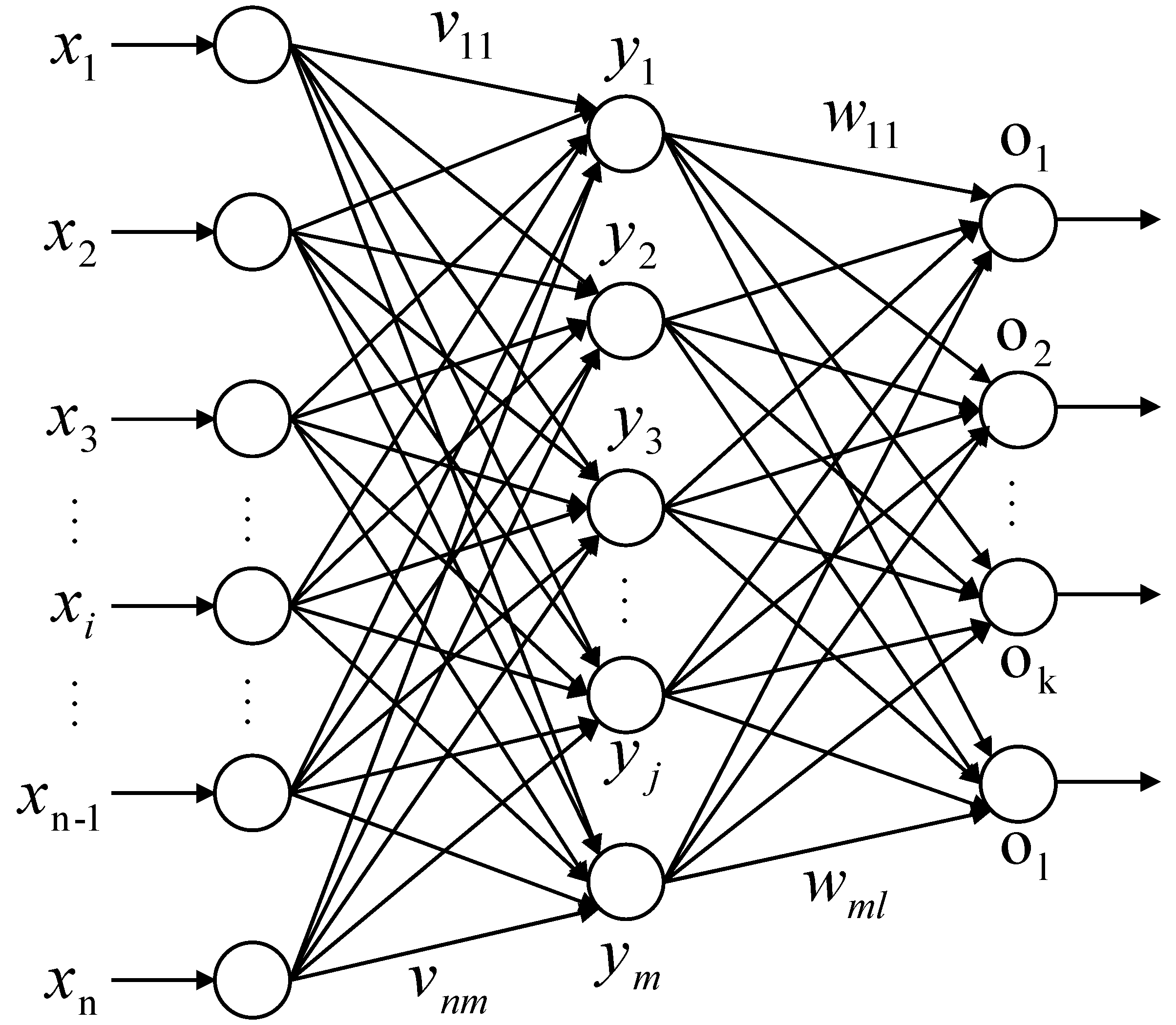
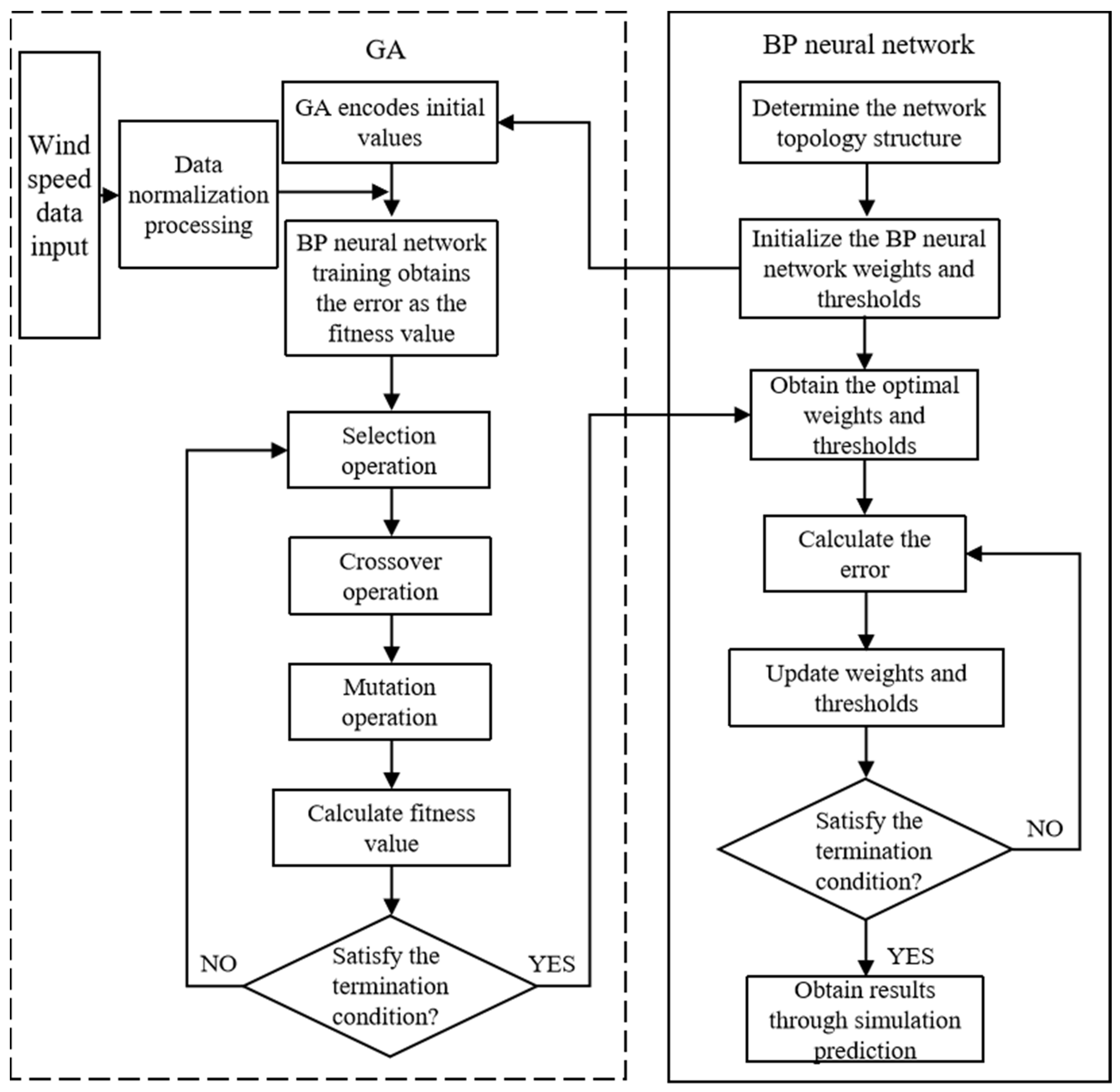

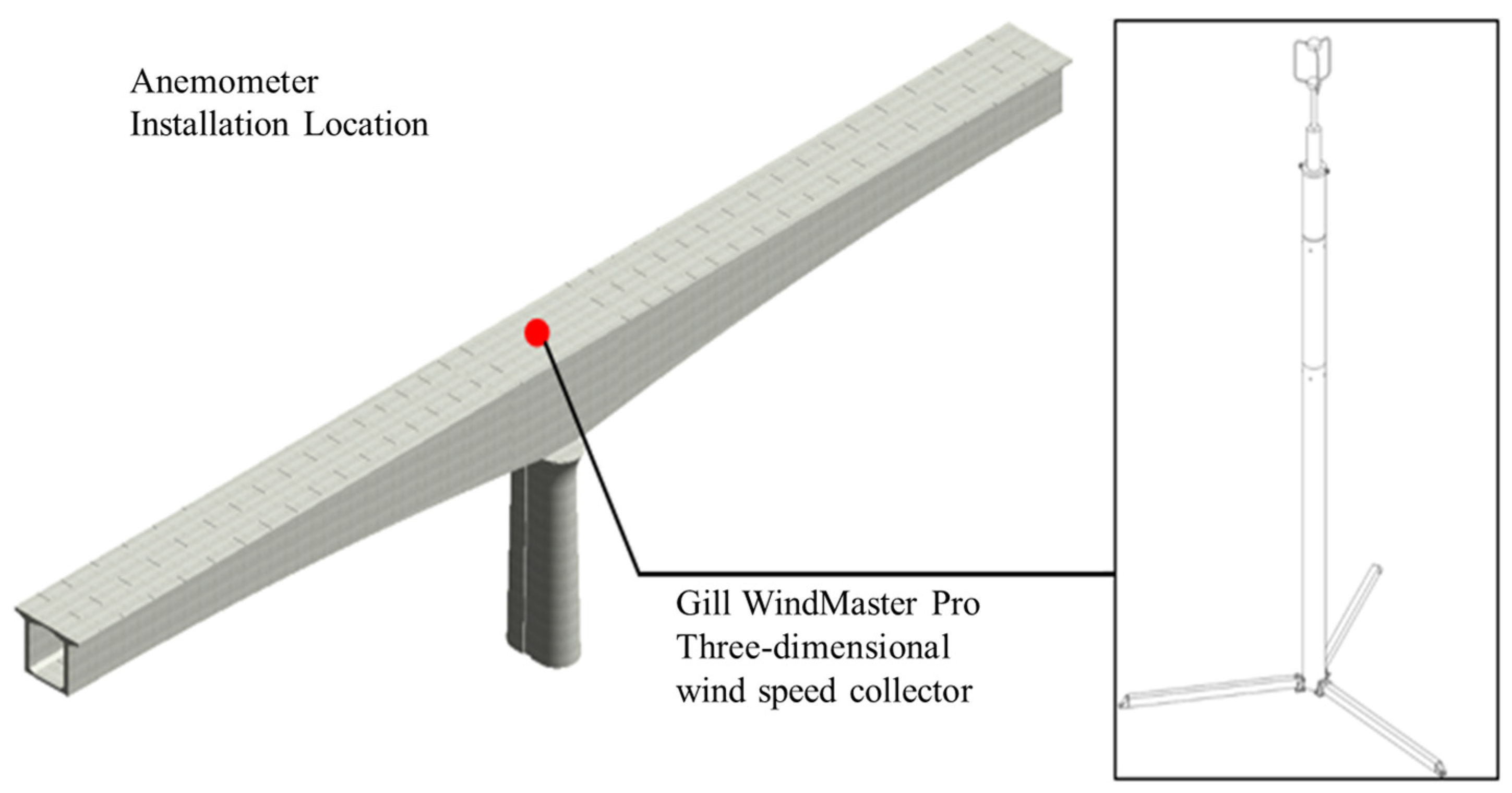
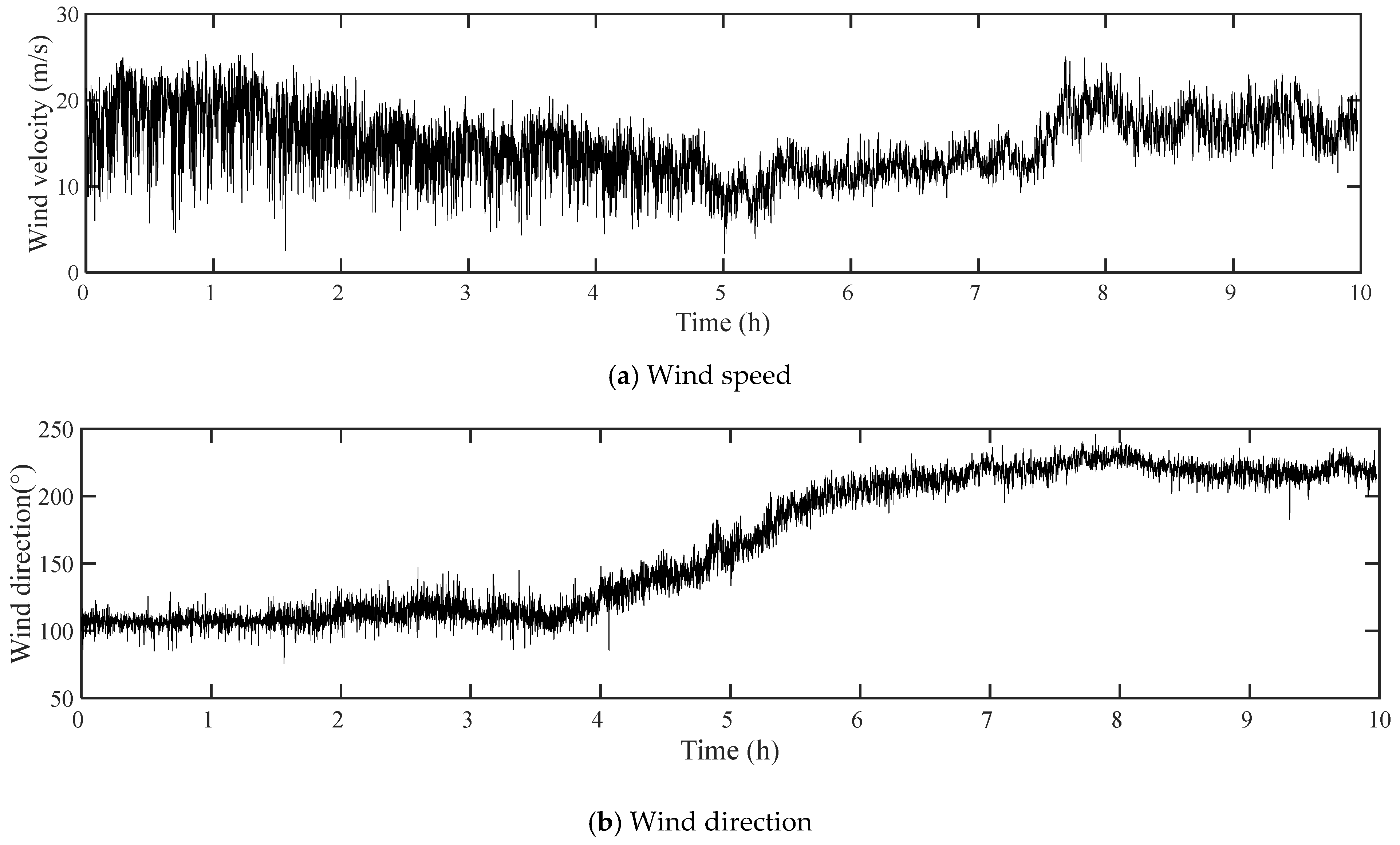
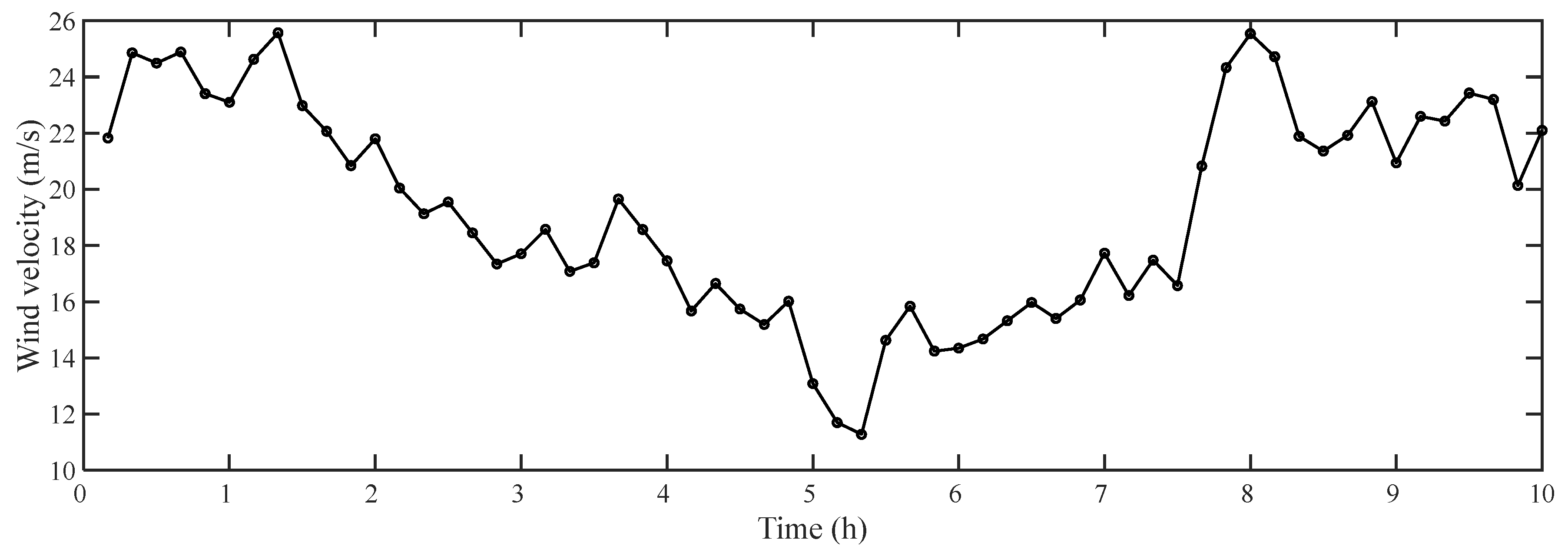
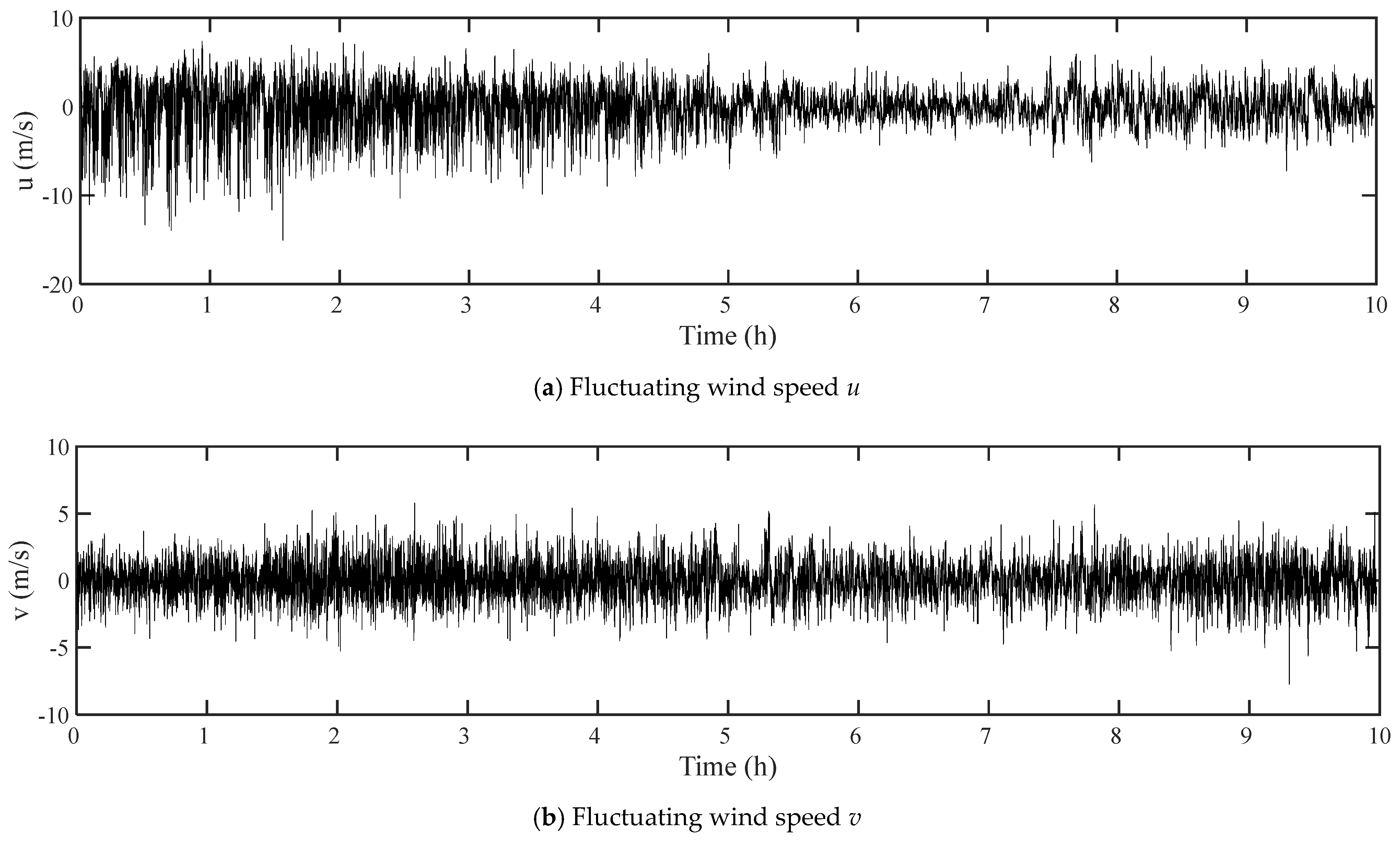


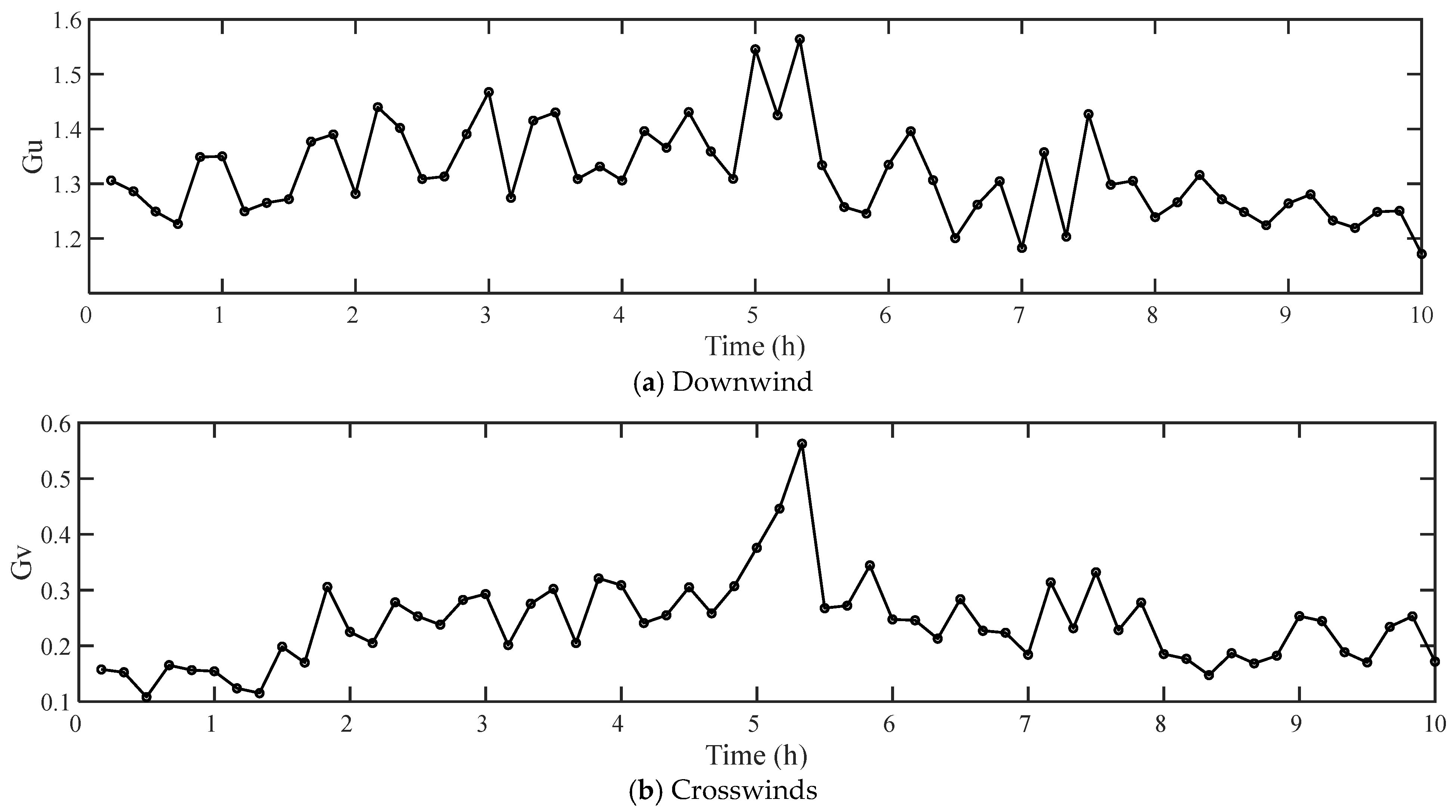
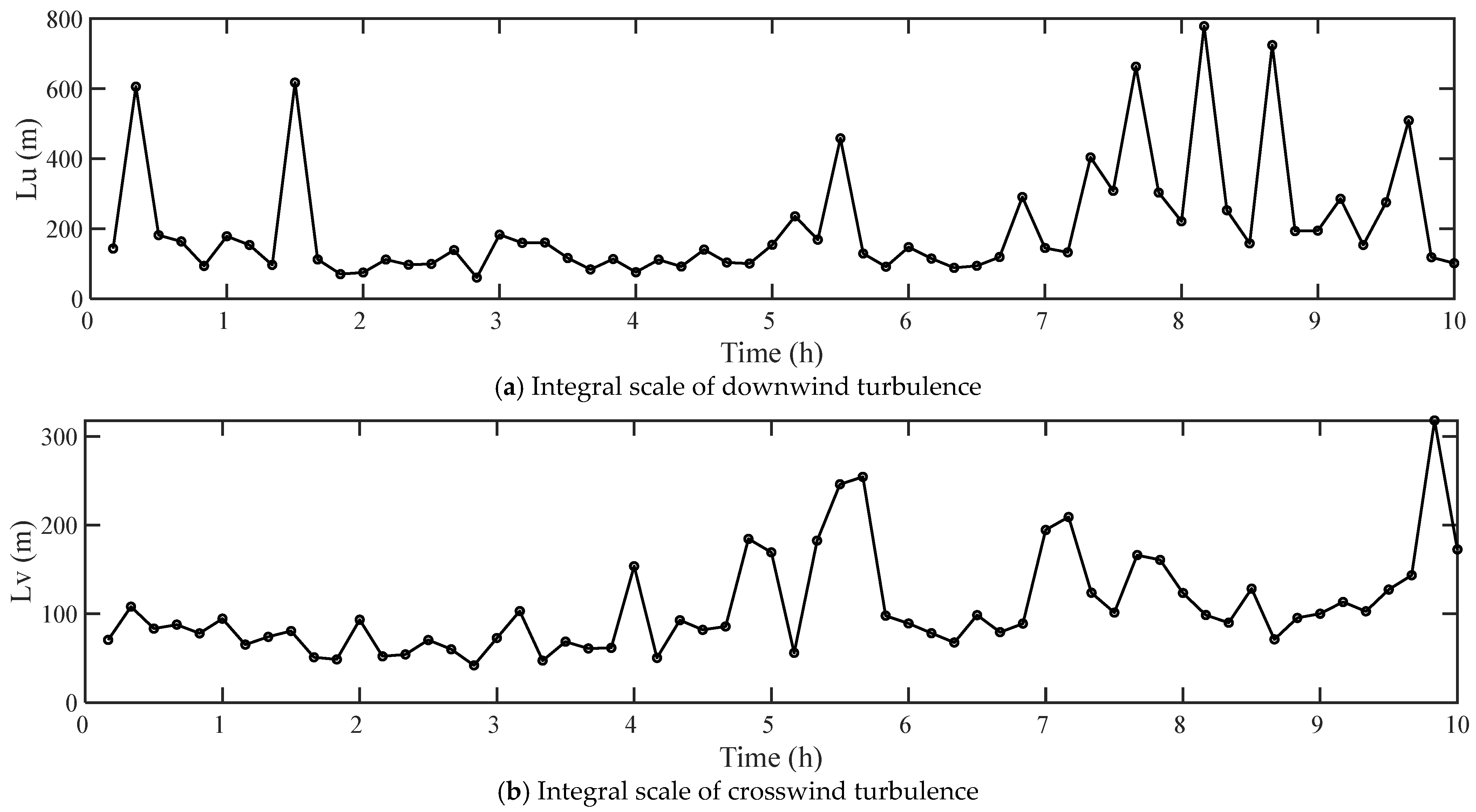
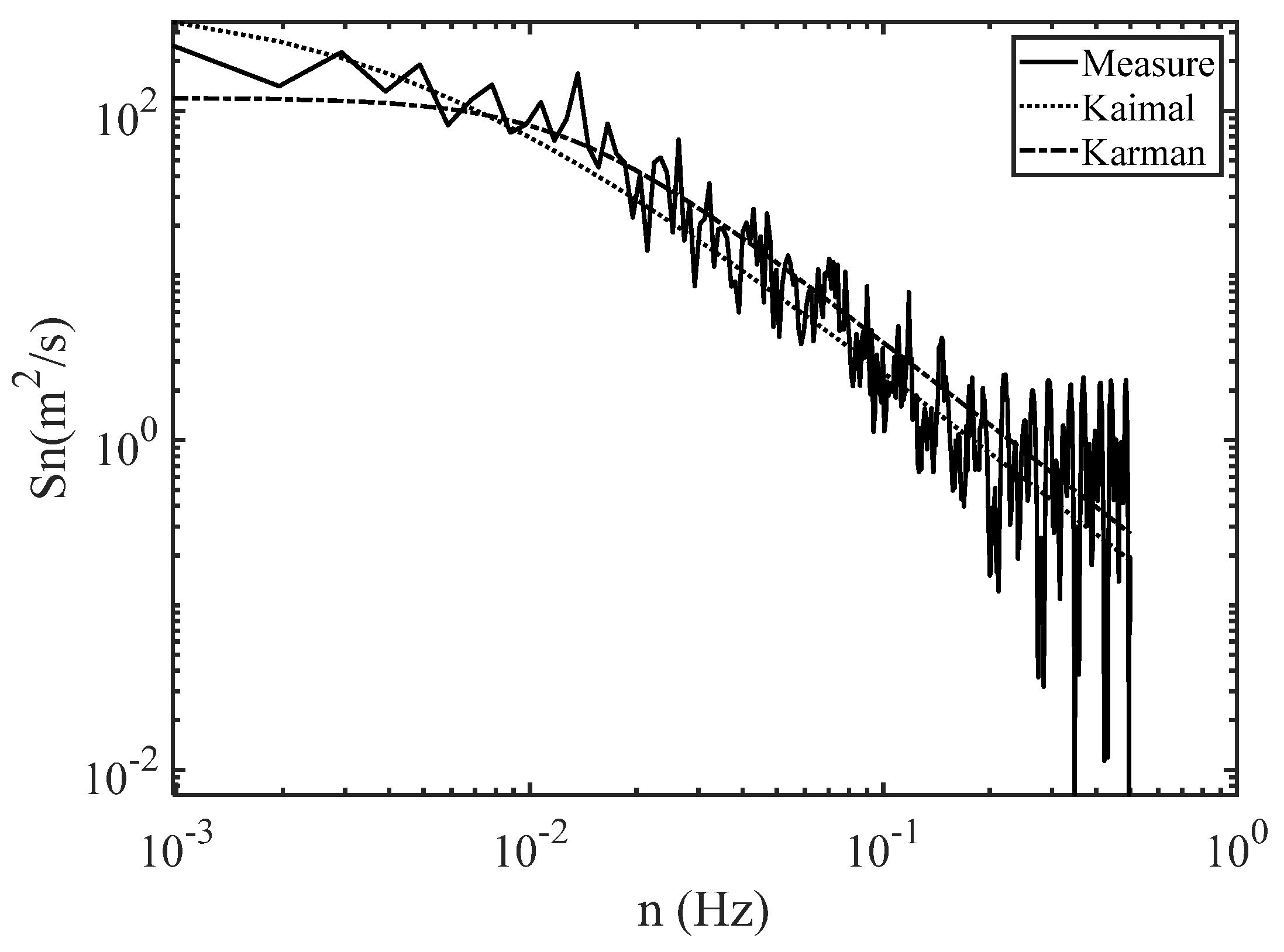
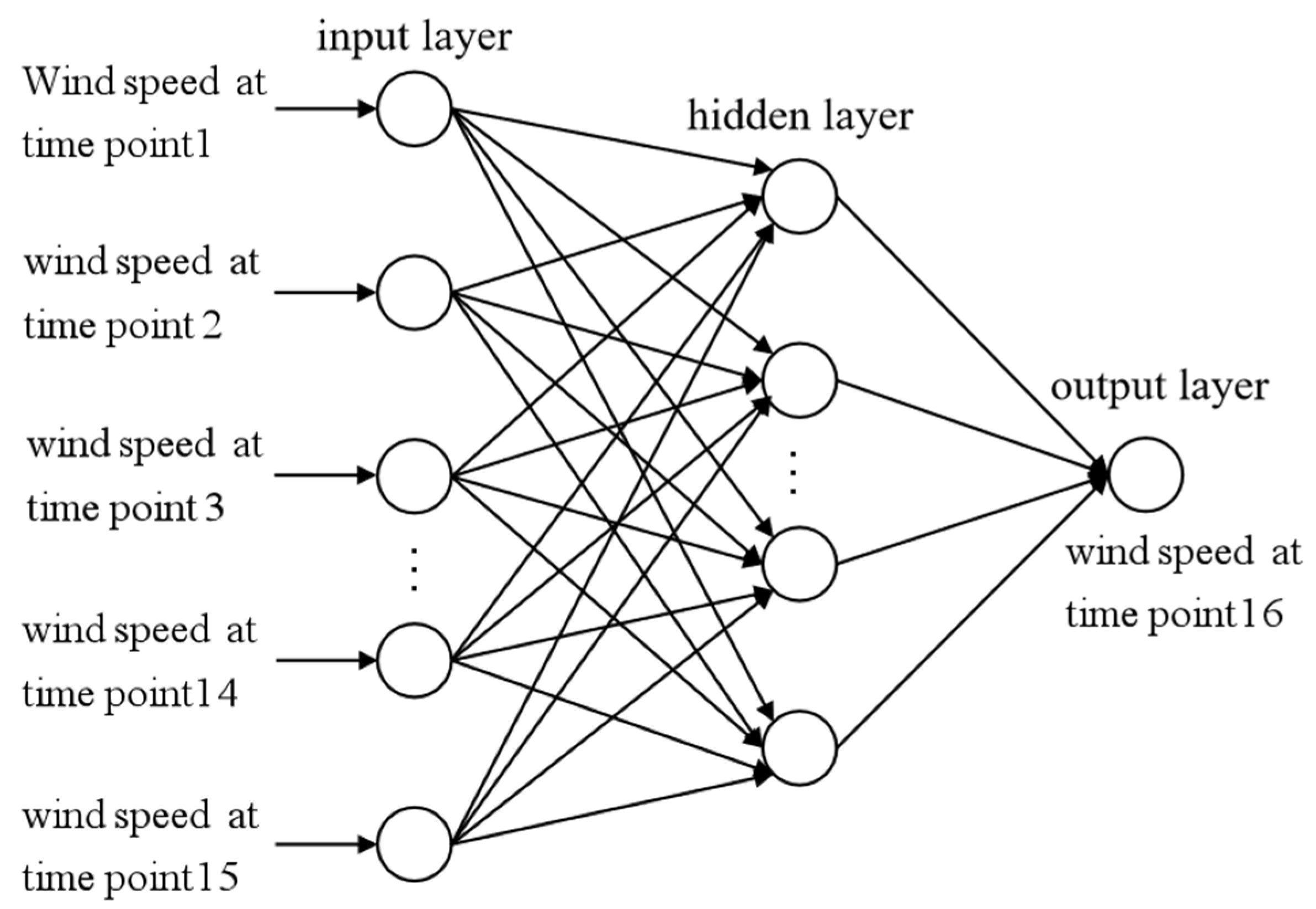
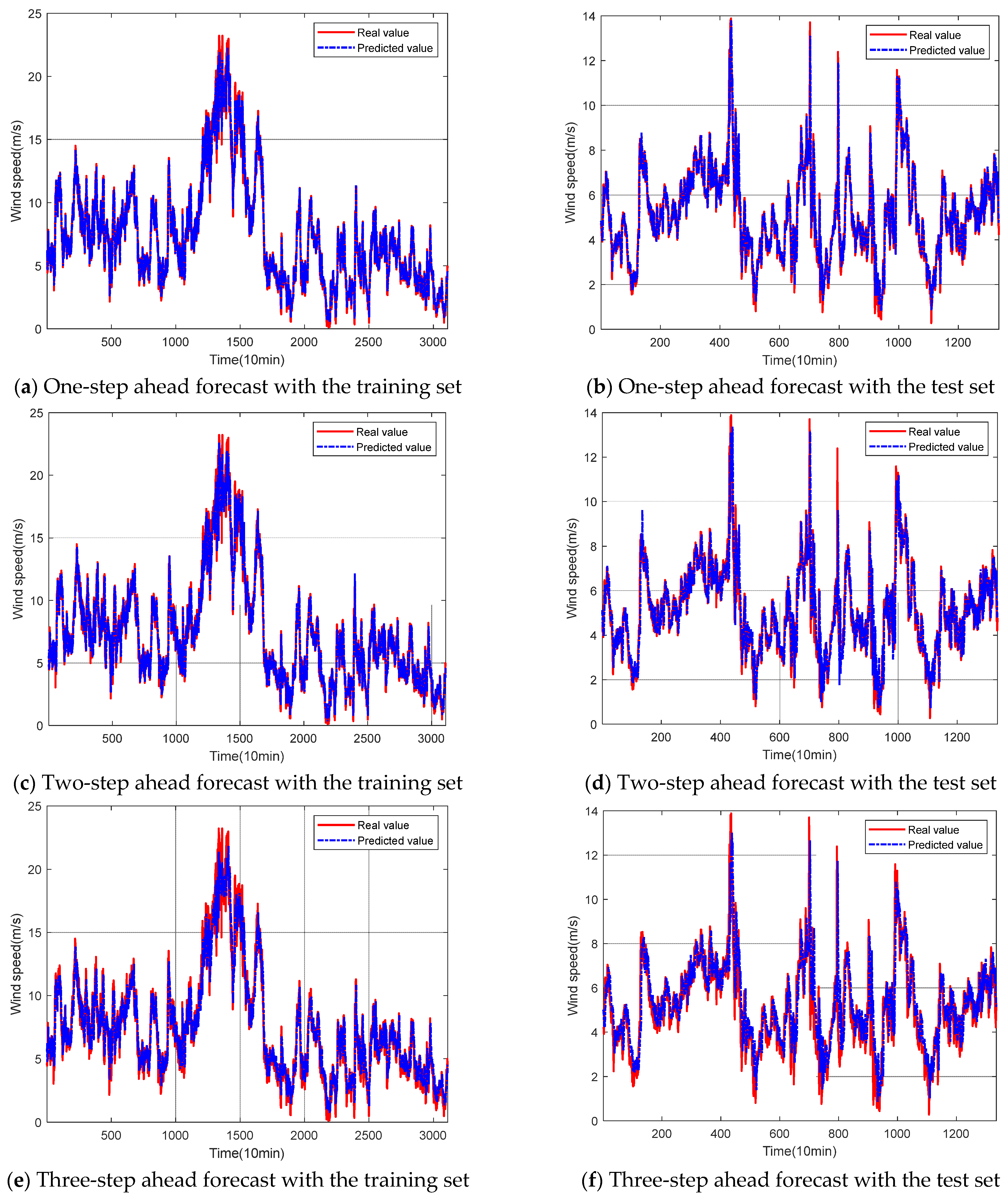
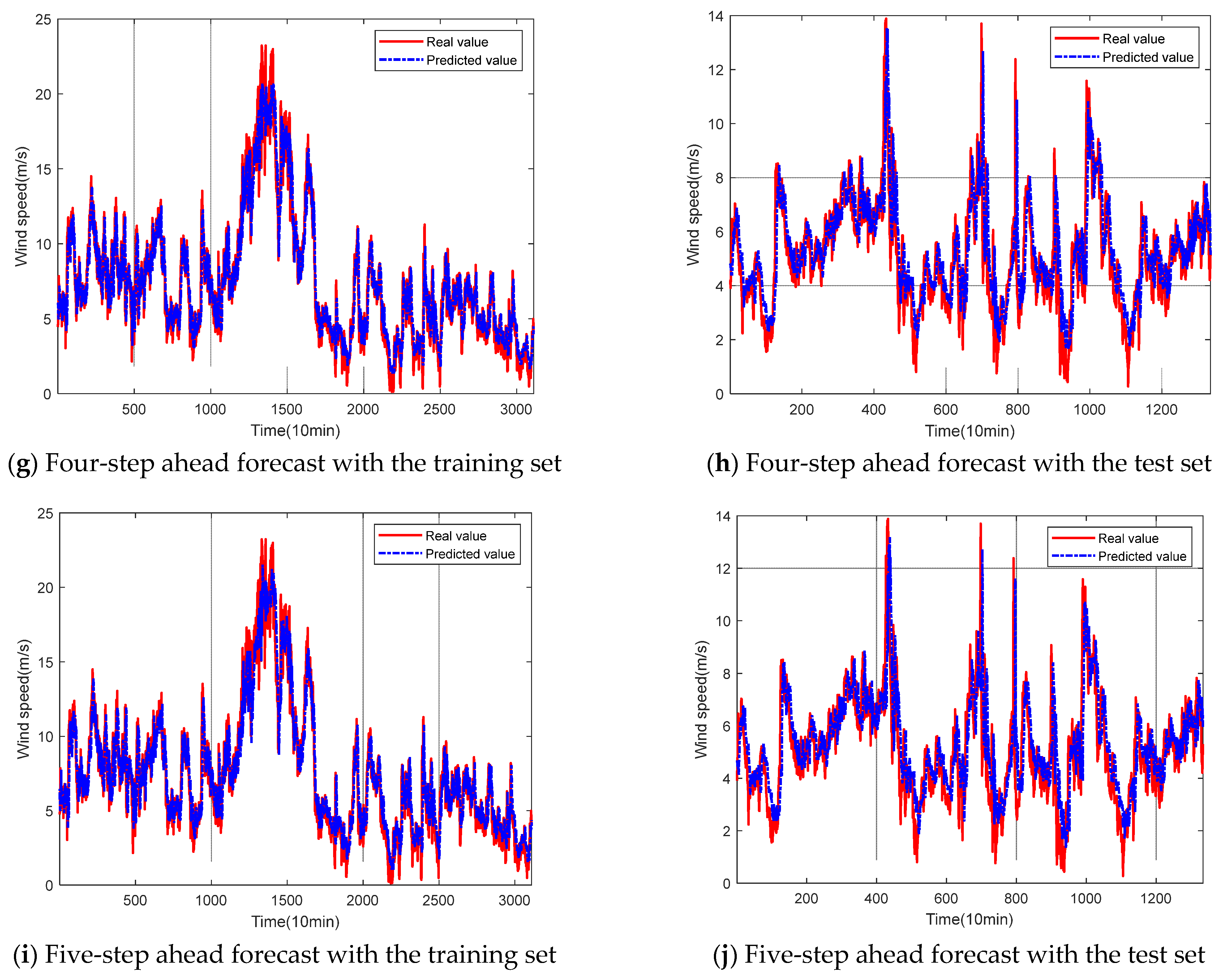
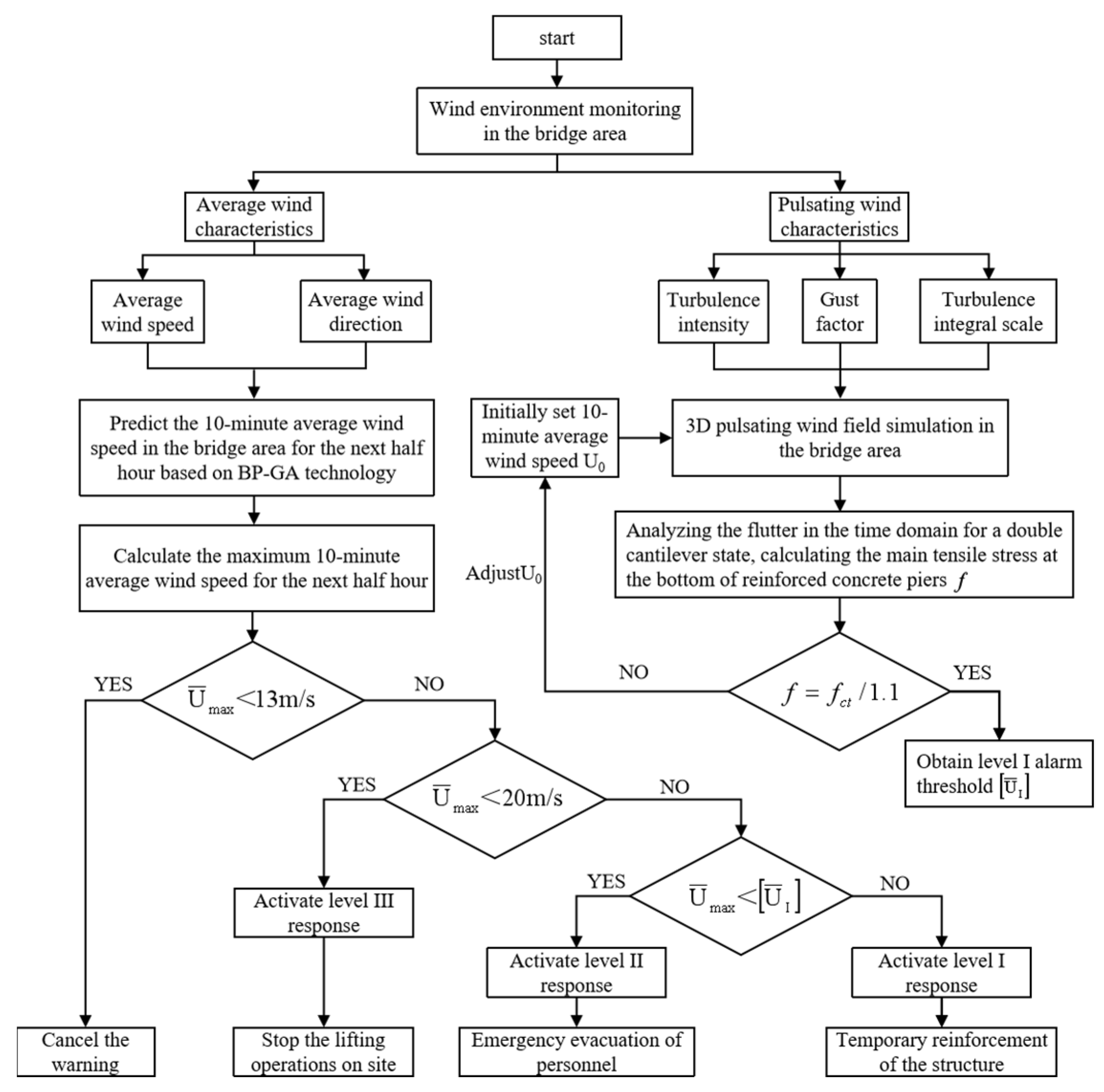
| Parameter Name | Parameter Value |
|---|---|
| Learning rate | 0.01 |
| Tolerance accuracy | 1 × 10−6 |
| Maximum number of training sessions | 1000 |
| Parameter Name | Parameter Value |
|---|---|
| Initial population size | 5 |
| Length of individual encoding | 86 |
| Number of optimization generations | 50 |
| Probability of crossover operation | 0.08 |
| Probability of mutation operation | 0.09 |
| Predicted Step Size | Training Set/Test Set | R2 | MAE | RMSE |
|---|---|---|---|---|
| 1 | training set | 0.967 | 0.561 | 0.787 |
| test set | 0.864 | 0.489 | 0.734 | |
| 2 | training set | 0.940 | 0.782 | 1.071 |
| test set | 0.743 | 0.700 | 1.015 | |
| 3 | training set | 0.917 | 0.926 | 1.240 |
| test set | 0.676 | 0.790 | 1.154 | |
| 4 | training set | 0.901 | 1.019 | 1.357 |
| test set | 0.610 | 0.886 | 1.246 | |
| 5 | training set | 0.882 | 1.105 | 1.479 |
| test set | 0.573 | 0.929 | 1.304 |
Disclaimer/Publisher’s Note: The statements, opinions and data contained in all publications are solely those of the individual author(s) and contributor(s) and not of MDPI and/or the editor(s). MDPI and/or the editor(s) disclaim responsibility for any injury to people or property resulting from any ideas, methods, instructions or products referred to in the content. |
© 2023 by the authors. Licensee MDPI, Basel, Switzerland. This article is an open access article distributed under the terms and conditions of the Creative Commons Attribution (CC BY) license (https://creativecommons.org/licenses/by/4.0/).
Share and Cite
Xie, Y.; Chang, X.; Mao, J.; Ni, Y.; Wang, H. Prediction and Early Warning of Extreme Winds for High-Speed Railway Bridge Construction Using Machine-Learning Methods. Sustainability 2023, 15, 16921. https://doi.org/10.3390/su152416921
Xie Y, Chang X, Mao J, Ni Y, Wang H. Prediction and Early Warning of Extreme Winds for High-Speed Railway Bridge Construction Using Machine-Learning Methods. Sustainability. 2023; 15(24):16921. https://doi.org/10.3390/su152416921
Chicago/Turabian StyleXie, Yishun, Xiangyu Chang, Jianxiao Mao, Youhao Ni, and Hao Wang. 2023. "Prediction and Early Warning of Extreme Winds for High-Speed Railway Bridge Construction Using Machine-Learning Methods" Sustainability 15, no. 24: 16921. https://doi.org/10.3390/su152416921
APA StyleXie, Y., Chang, X., Mao, J., Ni, Y., & Wang, H. (2023). Prediction and Early Warning of Extreme Winds for High-Speed Railway Bridge Construction Using Machine-Learning Methods. Sustainability, 15(24), 16921. https://doi.org/10.3390/su152416921








